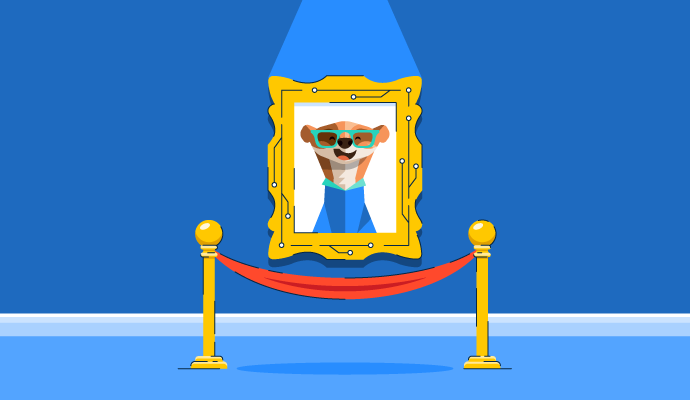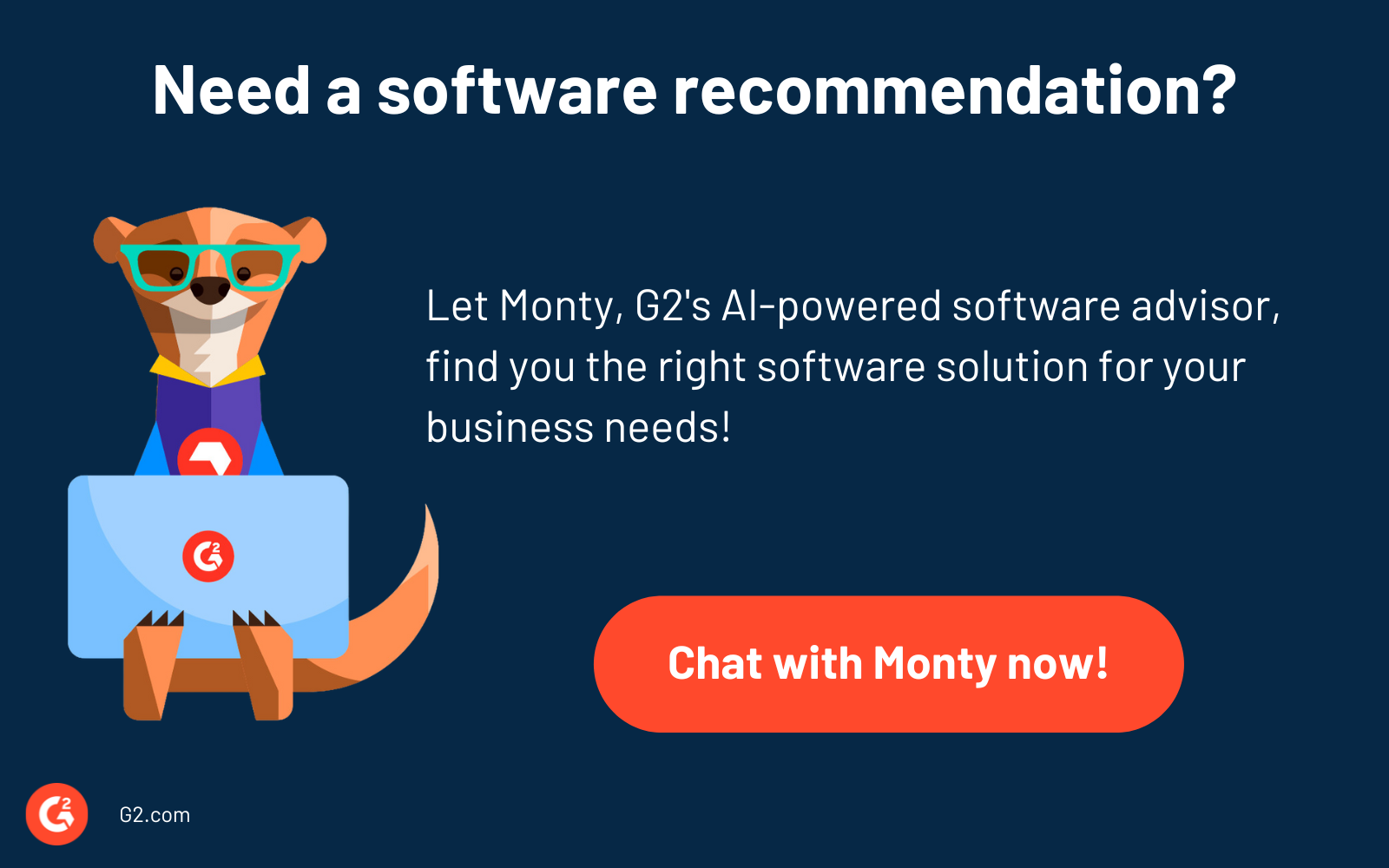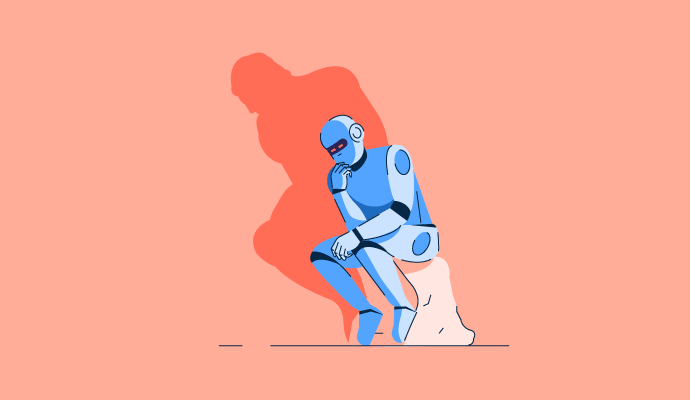When navigating the impact of artificial intelligence (AI), the arts and creative industry isn’t exempt.
Thanks to AI-generated art, you can imagine an image in your mind, turn it into a text prompt, and watch your words transform into an image in minutes.
What is AI-generated art?
AI-generated art includes any digital artwork or high-quality image generated or enhanced by artificial intelligence.
Many teams turn to AI image generators as partners in their creative endeavors. These tools have text-to-image capabilities that allow users to quickly provide a text prompt or keyword and receive a visually appealing image.
What is the history of AI-generated art?
AI-generated art has been around for longer than you may think.
1960s
The history of AI-generated art dates back to the late 1960s. In the Winter 2016 edition of AI Magazine, Paul Cohen wrote about his father, Harold Cohen, a computer programmer and developer of an AI tool called AARON.
Harold Cohen joined the visual arts department at the University of California, San Diego, in 1968. In 1971, he used his self-taught computer programming skills to exhibit computer-generated art at the Fall Joint Computer Conference.
In the following years, Cohen experimented with AARON, programming it to draw complex and difficult images for him to paint. Examples of Cohen’s work with AARON are on his website, and some museums, like the Whitney Museum of American Art, have hosted exhibitions to showcase AARON, the earliest AI program for creating art.
2010s
Decades later, AI-generated art evolved again. Ian Goodfellow went to a bar one evening in 2014 to celebrate one of his colleagues. He wondered what would happen if he pitted two neural networks (models that loosely model a brain’s neurons) against each other. As a result of his bar wonderings, Ian Goodfellow discovered generative adversarial networks (GANs).
GANs train two neural networks to compete and generate new data from a provided training dataset. One network produces new data, while the other attempts to discern its fakeness. This process helps both networks learn and improve over time.
One of the most significant applications of GANs is creating realistic images through text-based prompts. GANs can also edit and modify existing images.
2020s
As generative AI evolved and AI became more prevalent in 2020, various companies began developing and releasing AI art generators that turn text-based prompts into generated images.
Some of the most well-known ones today include DALL·E (2021), DALL·E 2 (2022), Midjourney (2022), Adobe Firefly (2023), DALL·E 3 (2023), and Gemini (2023).
Quer aprender mais sobre Software de Inteligência Artificial? Explore os produtos de Inteligência Artificial.
How does AI-generated art work?
First, AI tools must consume large datasets of existing artwork to serve as the training data for the machine learning model. Trainers can teach AI algorithms millions and billions of image-text pairs and artwork attributes to teach them what various artwork should look like. Then, a user can draft a text-based prompt and ask the AI art generator to create an image based on its prompt. The tool pulls from its input data to generate an output that reflects the prompt.
It’s essential to note that while this general process is consistent, different types of AI models, including GANs and diffusion models, are used for AI-generated art. GANs train a pair of networks to classify images, allowing them to generate high-quality and realistic pictures. In comparison, diffusion models take an input image, add noise until it is unrecognizable, and perform a reverse diffusion process to produce a lifelike image based on the original.
Examples of AI-generated art
Here’s an example of a prompt I put into Adobe Firefly and one of the images it returned as a result:
Prompt: “Create a colorful painting of Seoul, South Korea, in the spring.”
Google Gemini is improving its ability to generate images, so I tried a different type of prompt to generate a nature-focused piece of art. Here’s the prompt I entered and one of the images it returned:
Prompt: “Create an image of a serene and small fishing lake nestled in the mountains with the sun setting in the background. The lake is surrounded by fields of red and yellow flowers, and there are tents in campgrounds off in the distance.”
What are some of the concerns around AI-generated art?
AI-generated art offers pros, including efficiencies in producing large volumes of artwork at any given time and expanding accessibility to non-artistic individuals. There are also some potential concerns and challenges in using AI art generators worth considering.
Devaluation of artistic abilities
Like similar fields impacted by the rise of artificial intelligence, some artists fear these tools will lead to a societal devaluation of human artistic talents.
If more people and businesses generate the artwork they want or need for various use cases using AI, how will it impact the demand for the expertise of trained artists? Will they be less sought after due to the accessibility and output of AI art generators?
Copyright infringement challenges
There are many potential legal issues and challenges that can arise when using AI-generated art. Authorship, in particular, is a significant issue. In an article for Houston Law Review, Mackenzie Caldwell writes, “According to a wealth of legal scholarship, there are three possible ‘authors’ of AI art: (1) the AI’s developer; (2) the AI itself; and (3) the AI’s end user.” Understanding authorship is crucial in determining the applicability of copyright and protection to copyrighted work.
Additionally, artists like Kelly McKernan have sued Midjourney, Stable Diffusion, and DreamUp for using LAION-5B, a publicly available database with more than five billion images from across the internet, without consent to use her copyrighted work.
Copyright questions arise from various angles when leveraging AI-generated artwork and will likely continue to be a work in progress as AI evolves.
Lack of originality and creativity
Art is an inherently creative and somewhat individualized skill, meaning artists can add flair and personal touches that set them apart from other artists. With AI-generated art tools, you can only generate images based on the data the training model receives, which means it will never have an entirely similar personal touch, no matter how visually high the quality of an image is.
Relatedly, AI art generators may output similar results to similar prompts since they can only pull from their training data. AI-generated artwork may appear unoriginal and less nuanced than artwork without AI influence.
Top 5 AI image generators
AI image generators are platforms of software applications that use generative AI to create high-quality images from text-based prompting. They’re designed to mimic human-like artistic styles and creativity. AI image generators allow users to generate realistic images based on specified image attributes like style, color, object details, composition, and scheme.
To qualify for inclusion in the AI image generators category, a product must:
- Utilize advanced artificial intelligence algorithms to generate high-quality images that mimic human-like creativity and artistic style using text prompts.
- Provide flexible customization options, allowing users to control various aspects of the generated images, such as style, composition, color palette, or specific object attributes.
- Enable users to interact with the AI image generation process, providing means to iterate, refine, or fine-tune the output through feedback mechanisms or interactive interfaces.
* Below are the top five leading budgeting and forecasting software platforms from G2’s Spring 2024 Grid® Report. Some reviews may be edited for clarity.
1. Midjourney
Midjourney is an independent research lab that provides text-to-image generative AI services. The service (currently only available through the Discord chat app) lets you quickly and easily transform a text description into a realistic image. The Midjourney Bot interprets a short text phrase by breaking down the words and phrases entered to generate an image.
What users like best:
“Let your imagination run wild! If you can put it into words, Midjourney can turn it into an image for you! Even the most non-artistic of us can now create incredible, unique, and original graphics! Midjourney has made huge strides in the ease of use and quality of the images produced since its first launch. With a simple text prompt, you can bring your imagination to life and create the perfect book cover or header image for your blog post. While you will see some incredibly complex prompts - don't be overwhelmed by them - the truth is that you can create amazing graphics with some very simple instructions.
It's an amazing tool, and I can't wait to see what the future holds.”
- Midjourney Review, Melody W.
What users dislike:
“While the Discord integration is convenient, some users may prefer alternative platforms. Expanding accessibility beyond Discord, even though a web interface is in the works, could further broaden the tool's reach and user base.”
- Midjourney Review, Gaetano C.
2. Adobe Firefly
Adobe Firefly is a powerful AI-powered tool that helps users turn text prompts into impressive images. It’s designed to help people expand upon their natural creativity directly in Adobe Photoshop and other Adobe tools. With it, you can create stunning, life-like images and detailed scenes from scratch, swap the background on images, and boost overall image quality.
What users like best:
“It is so easy to use and really user-friendly. There are a lot of options you can select in terms of how you'd like your image to look, so if you want it in a particular style, they're all there. I use it weekly, if not a couple of times a week, and I've never had an issue with it.”
- Adobe Firefly Review, Parisa H.
What users dislike:
“App crash issues may occur while generating patterns from specific texts. These issues can be submitted to Adobe using the feedback button provided in the app, as it is currently in beta.”
- Adobe Firefly Review, Verma S.
3. Pareto
Pareto is a generative AI tool for businesses with text-to-text and text-to-image capabilities that allows companies to build an AI for their company in seconds. Known as Tess AI, the tool has access to the world’s largest AIs. Companies can use Tess AI to create images and videos using Midjourney, DALL·E, Pareto’s proprietary AI models, and more in seconds.
Additionally, Tess AI can help with social listening, data analysis, audio transcriptions, video transcriptions, and summarizing information.
What users like best:
"The applied technologies and the ease of navigating through the website are truly remarkable. The user-friendly interface, creative design options, and responsive customer support make Pareto an exceptional platform for logo creation."
- Pareto Review, Antonio F.
What users dislike:
“The platform is so complete that it feels complex to begin with. Starting can be a tough mission until you understand the meaning and function of each aspect of the software—choosing the type of creation, looking for templates, understanding the creator's playground, etc. It really should have a walkthrough assistant.”
- Pareto Review, Edson F.
4. Microsoft Designer
Microsoft Designer helps people bring their image ideas to life with an image creator, sticker creator, generative erase feature, AI-powered brand kit creator, AI-generated frames for images, and more. It provides pre-designed templates in Microsoft Create and prompt templates for better image generation.
What users like best:
“Microsoft Designer is free to use at the moment and helps create stunning images, design, and background pictures with a few clicks. It is user-friendly, and it works quickly with commands. As instructions are given, it quickly generates images and makes presentations more impressive. It can be easily connected with PowerPoint and can be used to design better templates for PPTs. MD, as it's easy to access, even students of early ages could showcase their creativity in projects. I have frequently been using it for each class, and it helped me create images, posters, and small video animations for different occasions like festivals, etc, without having much designing skills.”
- Microsoft Designer Review, Anjali J.
What users dislike:
“The only thing I disliked was the learning curve. Even with experience with graphic design, the learning curve for Microsoft can be steep. It did take time to get used to the various features and functionalities.”
- Microsoft Designer Review, Kendra W.
5. AI Chat
AI Chat, a.k.a. Bob, is an AI conversation assistant powered by OpenAI’s ChatGPT & GPT-4. Users can chat with Bob, ask questions, obtain writing assistance, translate various languages, and quickly and easily turn words into AI-generated art.
What users like best:
“AI Chat is simple and easy to work with, making it accessible to everyone. It serves as a multifaceted tool—helping with messaging, writing stories, acting as a virtual tutor, generating images, and aiding in coding. Unlike other AI products that may require technical background knowledge, AI Chat is user-friendly and intuitive.”
- AI Chat Review, Akanksha R.
What users dislike:
“It struggles to understand complex queries or provide accurate responses. As an AI, it does not think as human.”
- AI Chat Review, Apurv S.
Your artwork is stunning
AI-generated artwork is here to stay. The right AI image generator benefits the creative process, but these tools aren’t without potential concerns, including copyright questions and a lack of creativity. Use them wisely!
Read more about the power of generative AI, its use cases, and why it matters.

Alyssa Towns
Alyssa Towns works in communications and change management and is a freelance writer for G2. She mainly writes SaaS, productivity, and career-adjacent content. In her spare time, Alyssa is either enjoying a new restaurant with her husband, playing with her Bengal cats Yeti and Yowie, adventuring outdoors, or reading a book from her TBR list.


